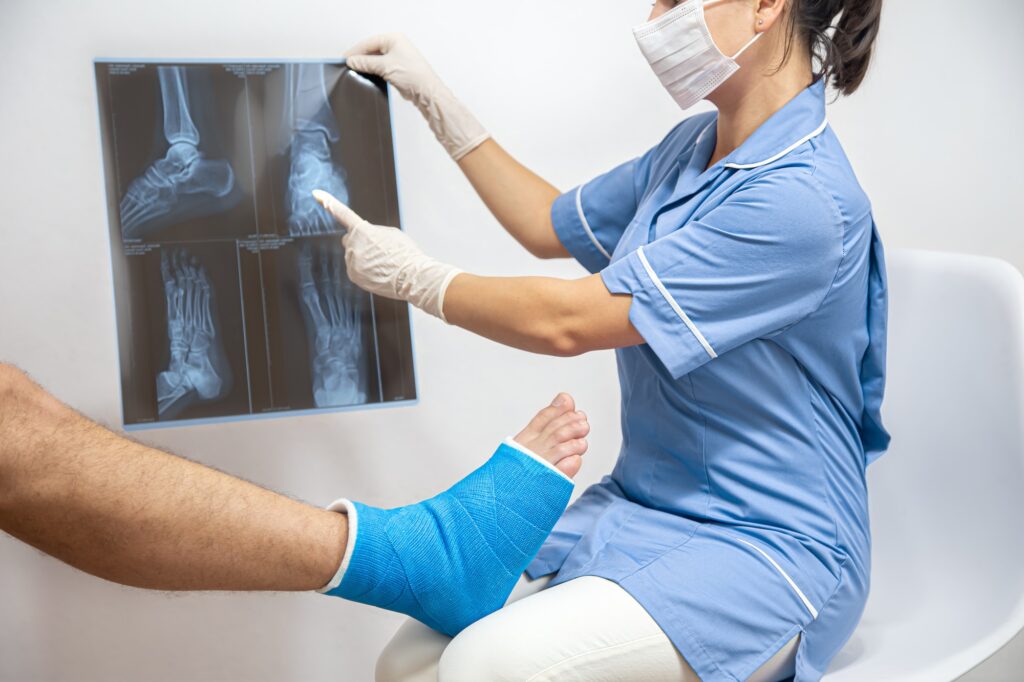Causes of Broken Bones in the Feet
The usual areas of the feet which suffer injuries are the toes, the top of the foot, the underside of the foot and the ankle. This can happen due to a number of reasons, including:
- Trauma from accidents and injuries.
- Impact of something falling on the feet.
- Falls and injuries from sports.
- Sudden twists and turns can cause stress fractures.
- Arthritis can deform bones causing breaks.
- Osteoporosis causes weak and brittle bones that can fracture easily.
- Overuse of the feet.
- In the elderly, the bones may weaken causing breaks.
- Being overweight increases chances of broken bones due to added pressure.
- Intensive sports activities can cause stress fractures.
Symptoms of Feet Fractures
The symptoms of the fracture can vary depending on the location of the break and the severity. It can be a complicated fracture that could be open with multiple breaks, or it can a simple, single break. Stress fractures are also common in the bones of the feet.
Some common symptoms for any break in the feet include:
- Pain and tenderness
- Pain while walking
- Pain when weight is applied on the area
- Redness and bruising
- Inflammation
- Stiffness
- Bone sticking out
- Bone looking deformed
If you suspect a broken bone, it is important to get emergency medical help at once.
Toe Fractures
Usually, a mild break on the toes can be treated with a toe splint to hold it in place. Sometimes, people stub their toes hard and break the bone but may not realize that it is a fracture. They may strap the toe and take OTC medication for the pain.
But a break can sometimes lead to more serious problems, like infection, arthritis or long-term foot pain. It is better to seek medical help if there are symptoms like:
- Open wounds
- Infections
- Fever or chills
- Intense pain under toe nail due to blood build-up
- Discoloration of nail
- Numbness or tingling in toe
- Pain and inflammation which persist even after a few days
The duration of the attacks can vary from a few days to a few weeks. Once the attack has passed there is no way of knowing when the next one will occur; it could be days, weeks months or even years.
Gout can be a debilitating medical condition that can affect a patient’s lifestyle. But with proper medication and care on the part of the person suffering from the condition, and with good podiatric support and guidance, it can be controlled and the impact on the quality of life minimized.
Foot Fractures
The feet are made of many small bones and are prone to stress fractures, especially among athletes. Fractures can range from tiny cracks in the bones to breaks that pierce the skin. Treatment will depend on the location and severity of the fracture. A severe fracture may require surgery where in plates, rods or screws may be used to set the bones back in place. Following the podiatrist’s advice for rest and rehabilitation is important.
Ankle Fractures
Broken ankles usually involve multiple fractures as there are many bones that make up the ankle joint. It can be a rotational injury, wherein the ankle is twisted, turned or rolled while walking or running or during a sports activity. It can also be caused by a high-impact collision like a fall or automobile collision. Ankle fractures are very serious and usually require surgery to set them right. The recovery time would also be longer.
Any break or suspected break in the toe, foot or ankle should be assessed by a doctor and given proper treatment.


